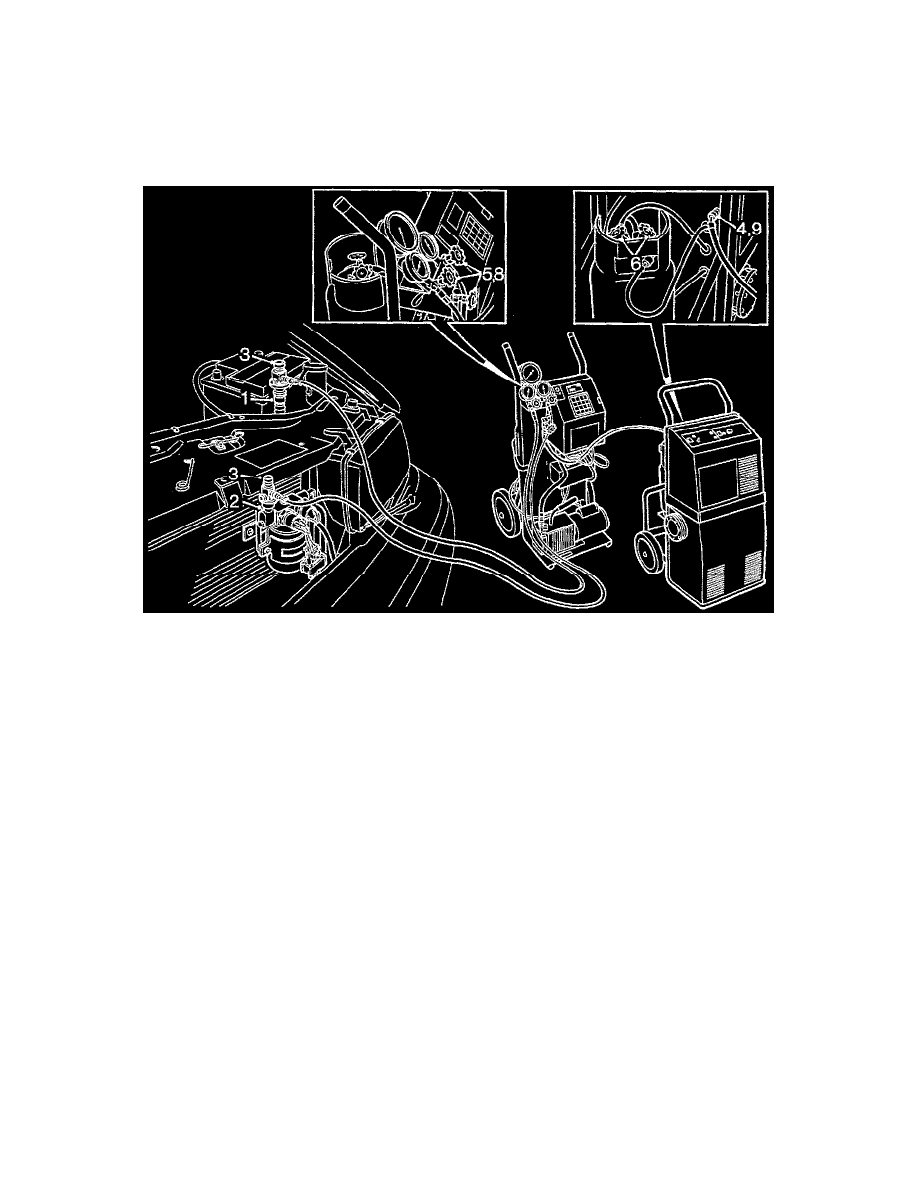900 S Sedan V6-2498cc 2.5L DOHC (1995)

1. Check that the cock on the blue low-pressure hose and the cock on the red high-pressure hose on the pressure gauge stand are both closed.
2. Using a snap-on coupling, connect the blue low-pressure hose to the low-pressure side of the A/C system.
3. Using a snap-on coupling, connect the red high-pressure hose to the high-pressure side of the A/C system.
4. Open the valves on both snap-on couplings by screwing in the knobs.
5. Start the engine. At an engine speed of 1500-2000 rpm and an air temperature of 20 °C you should be able to read the following pressures on the
pressure gauge stand when the compressor is working:
-
Low-pressure side: 1-3 bar.
-
High-pressure side: 12-16.5 bar.
Robinair 10324 Smart Cart And Robinair 17234 Draining Station - Draining
1. Using a snap-on coupling, connect the blue low-pressure hose to the low-pressure side of the A/C system.
2. Using a snap-on coupling, connect the red high-pressure hose to the high-pressure side of the A/C system.
3. Open the valves on both snap-on couplings by screwing in the knobs.
4. Using the yellow hose, connect the pressure gauge stand's middle outlet to the draining station.
5. Open the cocks on the blue low-pressure hose and the red high-pressure hose and the cock on the yellow hose connected to the pressure gauge
stand's middle outlet.
6. Open the blue cock ("liquid") for liquid refrigerant and the red cock ("Gas") for gaseous refrigerant on the draining station's container.
7. Start the draining station. When draining is finished, the draining station will switch OFF automatically.
8. Close the cocks on the blue low-pressure hose, the red high-pressure hose and the yellow hose connected to the pressure gauge stand's middle
outlet.
9. Remove the yellow hose from the draining station. Draining is now finished and work on the A/C unit can commence.
